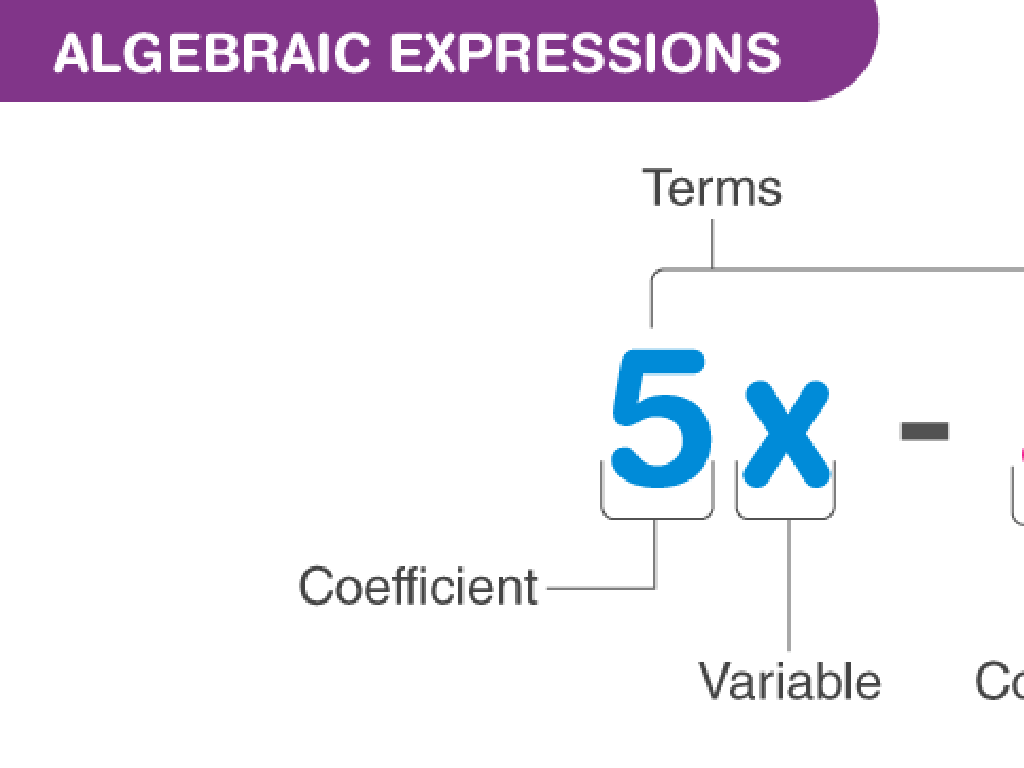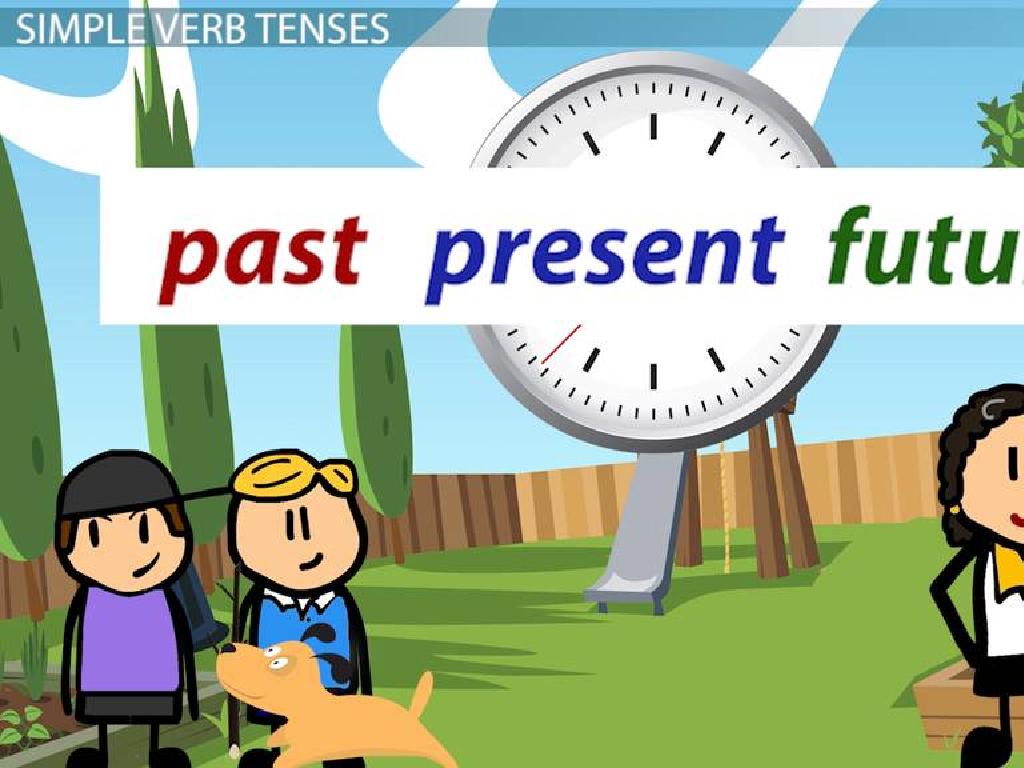Find The Median
Subject: Math
Grade: Fifth grade
Topic: Statistics
Please LOG IN to download the presentation. Access is available to registered users only.
View More Content
Finding the Median: The Middle Value
– Median: The middle number
– When numbers are in order, the median is the middle one.
– Steps to find the median
– 1. Arrange numbers 2. If odd, pick middle 3. If even, average two middles
– Median in odd & even sets
– Odd set: 3, 5, 7 (median is 5). Even set: 2, 4, 6, 8 (median is 5)
– Significance of the median
– Median gives a central point in a data set, useful for comparisons.
|
Today’s lesson introduces the concept of the median, a type of average that represents the middle value in a set of numbers. It’s crucial for students to understand that to find the median, numbers must first be arranged in numerical order. If there’s an odd number of values, the median is the single middle number. For an even number of values, the median is the average of the two middle numbers. The median is an important measure in statistics because it is less affected by outliers and skewed data than the mean, providing a more accurate central tendency for unevenly distributed data sets. Encourage students to practice with both odd and even sets of numbers to become comfortable with the concept.
Finding the Median in Statistics
– Median: The middle number
– It’s the middle value in a sorted list.
– Steps to find the median
– 1. Sort the numbers. 2. Find the middle.
– Even number of data points
– If 2 middle numbers, median is their average.
– Median with odd data points
– If the list has an odd number, the median is the center number.
|
The median is a statistical measure that represents the middle value of a dataset. When teaching fifth graders, start by explaining the concept of the median as the middle number in a sorted list. Demonstrate the process of finding the median with a simple, odd-numbered list first, then show an example with an even-numbered list, explaining how to take the average of the two middle numbers. Use real-life examples, such as finding the median age of students in the class or the median score on a test, to make the concept more relatable. Encourage students to practice with both types of lists to become comfortable with the concept.
Sorting Numbers to Find the Median
– First step: Sort numbers
– Sorting is arranging numbers in a sequence based on size.
– Order from smallest to largest
– Like lining up by height: shortest to tallest.
– Practice with an example set
– Example: 3, 1, 4 sorted is 1, 3, 4.
– Understanding the median
– Median is the middle number after sorting.
|
The slide introduces the concept of sorting as the preliminary step in finding the median of a set of numbers. Emphasize the importance of arranging the numbers in order from the smallest to the largest, akin to lining up students by height. Use an example set of numbers to demonstrate sorting in class. Explain that the median is the middle number in the sorted list, which represents the central tendency of the dataset. Encourage students to practice sorting with various sets of numbers to become comfortable with the process before moving on to finding the median.
Finding the Median with Odd Number of Data
– Sort the numbers in order
– Arrange from smallest to largest: 2, 3, 5, 7, 8
– Locate the middle number
– With 5 numbers, the 3rd number is in the middle
– The median is the middle value
– For our list, 5 is the median because it’s in the middle
– Practice with an example
– Try finding the median of 9, 4, 1, 6, 3
|
This slide introduces the concept of finding the median in a set of data with an odd number of elements. Start by explaining the importance of arranging the numbers in ascending order. Emphasize that the median is the number that falls in the middle of the dataset, which is easy to spot once the numbers are sorted. Use the example provided to walk through the steps. After explaining, give the students a chance to practice with a new set of numbers to reinforce the concept. Encourage them to explain their thought process as they find the median.
Finding the Median with Even Number of Data
– Sort all numbers in order
– Identify the two middle numbers
– In our example: 1, 4, 5, 7; the middle numbers are 4 and 5
– Calculate the average of the middle numbers
– Add them together and divide by 2: (4+5)/2
– The result is the median
|
When teaching students to find the median in a dataset with an even number of entries, start by sorting the numbers from smallest to largest. With the numbers in order, help them to locate the two middle numbers. In our example, after sorting the numbers 1, 4, 5, 7, the middle numbers are 4 and 5. To find the median, they need to calculate the average of these two numbers by adding them together and then dividing by 2, which gives us 4.5. This number represents the median, or the middle value, of the dataset. Encourage students to practice with different sets of numbers to become comfortable with this process.
Why Median Matters in Statistics
– Median divides data into two halves
– Median is robust against outliers
– Outliers are extreme values that don’t affect the median as much as they do the mean.
– Median vs. Mean in skewed data
– In a skewed distribution, the median is a better measure of central tendency than the mean.
– Understanding median’s importance
|
The median is a crucial concept in statistics, especially when dealing with a data set that isn’t symmetrical or has outliers. It’s important for students to understand that the median is the middle value when a data set is ordered from least to greatest, and it divides the data into two equal parts. Unlike the mean, which can be heavily influenced by outliers or skewed data, the median provides a more accurate reflection of the central tendency in such situations. This slide aims to highlight the significance of the median in providing a reliable measure of the center of the data, which is less likely to be distorted by extreme values.
Class Activity: Median Hunt
– Pair up and list your ages
– Sort the ages and find the median
– Arrange from youngest to oldest, then locate the middle age
– Count letters in full names for median
– Write down your full names, count the letters, and find the middle number
– Share your findings with the class
|
This interactive activity is designed to help students understand the concept of median in a fun and engaging way. By working in pairs, students will first list each other’s ages, then sort these numbers from youngest to oldest to find the median age. Next, they will write down their full names, count the letters in each, and again find the median number of letters. This hands-on approach reinforces the process of finding the median in different contexts. As a teacher, facilitate the activity by guiding students through the steps and ensuring they understand how to find the median. After the activity, have each pair share their findings with the class to encourage discussion and reinforce learning outcomes. Possible variations of the activity could include finding the median of shoe sizes, favorite numbers, or the number of pets each student has.
Homework Challenge: Family Ages Median
– List ages of your family members
– Calculate the median age
Arrange the ages in order and find the middle value
– Write a paragraph on its importance
Why might knowing the median age be useful for your family?
– Share your findings in class
|
This homework task is designed to help students apply the concept of median to a real-world scenario by using data that is familiar to them: their family’s ages. Students should first gather the ages of all their family members and then arrange these numbers in ascending or descending order. The median is the middle number in this ordered list, and if there is an even number of ages, the median will be the average of the two middle numbers. Students should then reflect on why the median age could be significant for their family, considering aspects like planning for the future or understanding the family’s demographics. Encourage students to share their findings and reasoning in the next class, fostering a discussion on the practical applications of median in everyday life.





